(wimple, mappah)

A cloth band that holds the rolled Torah scroll together when it is not being read.
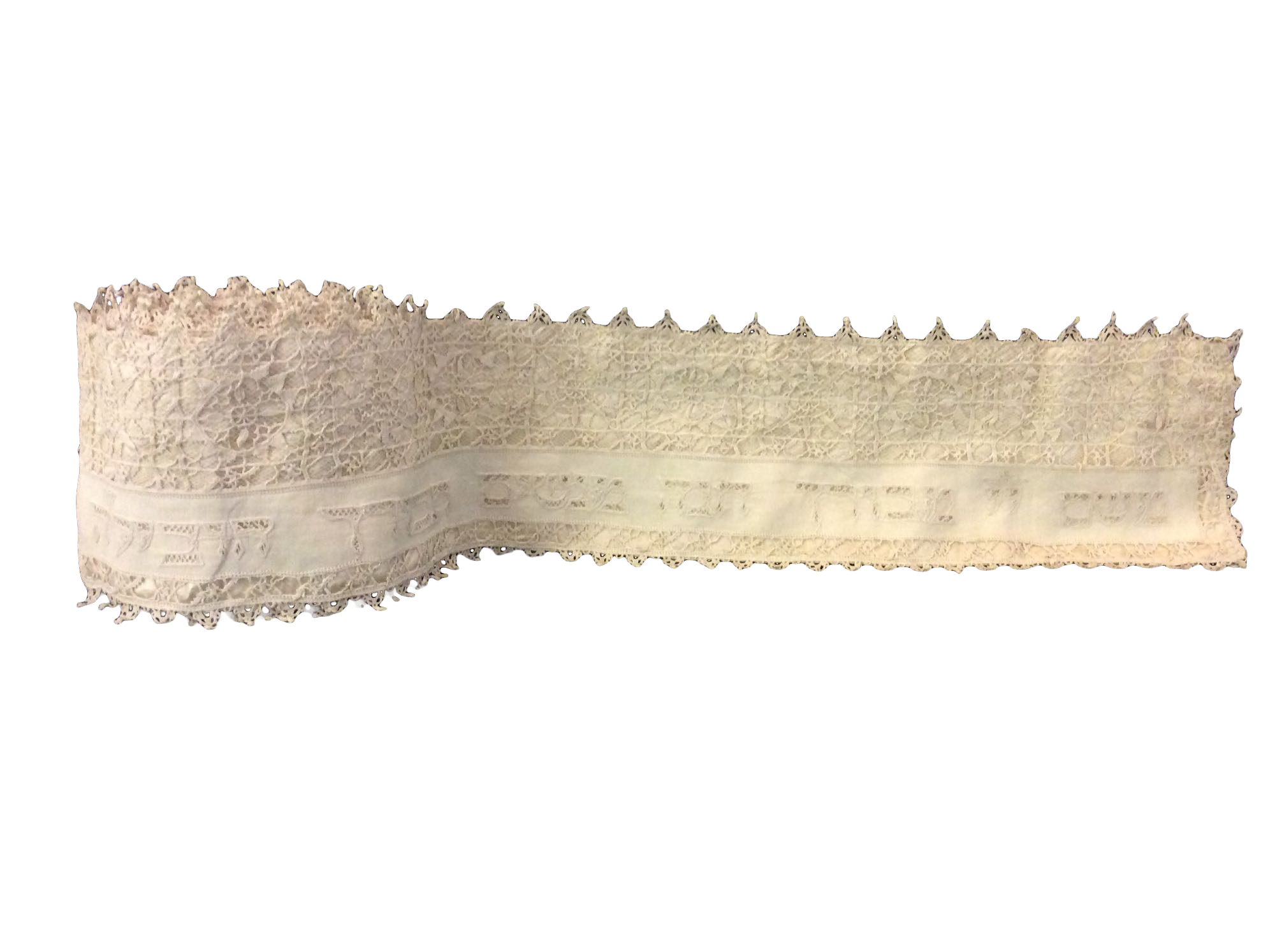
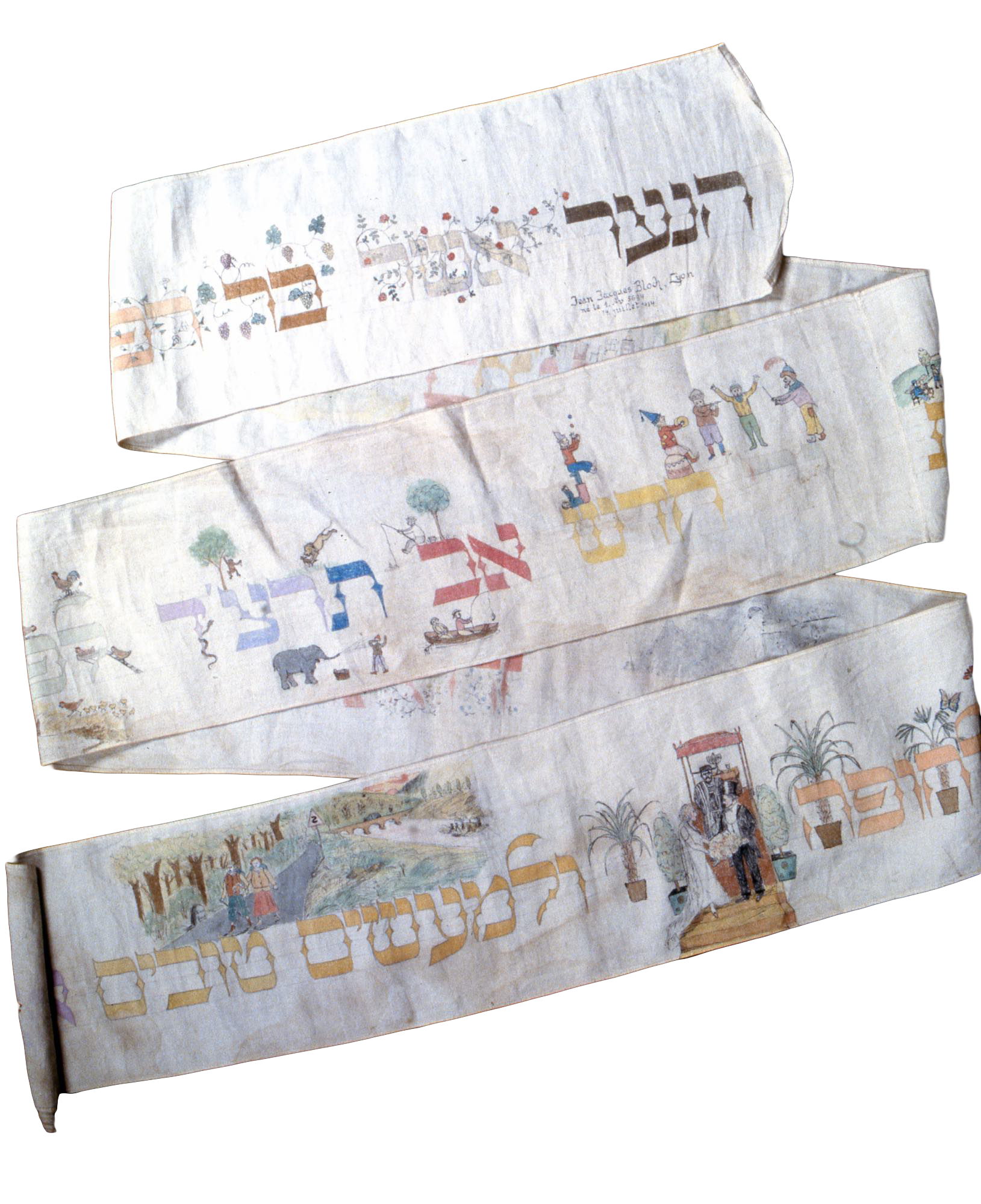

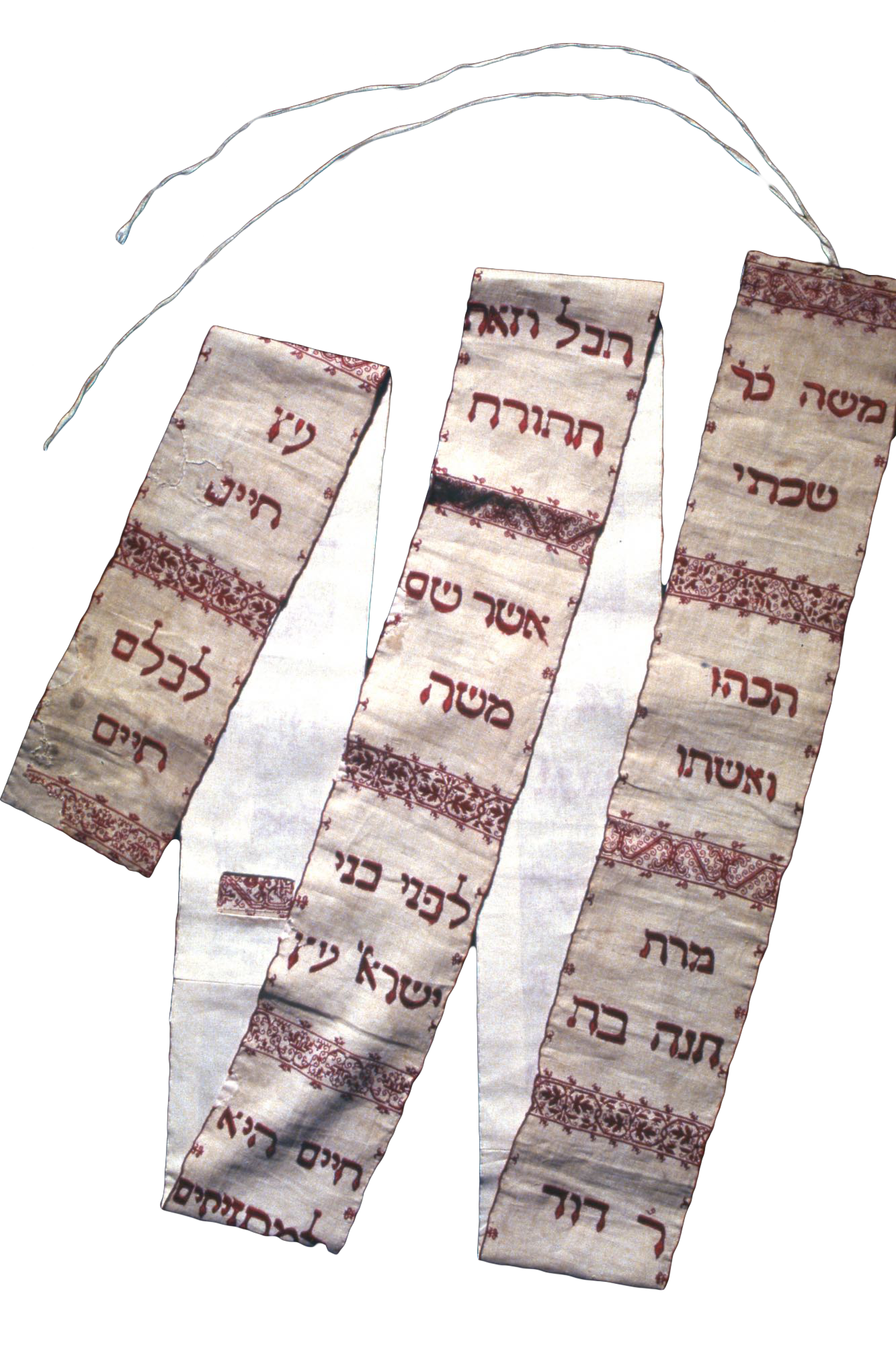
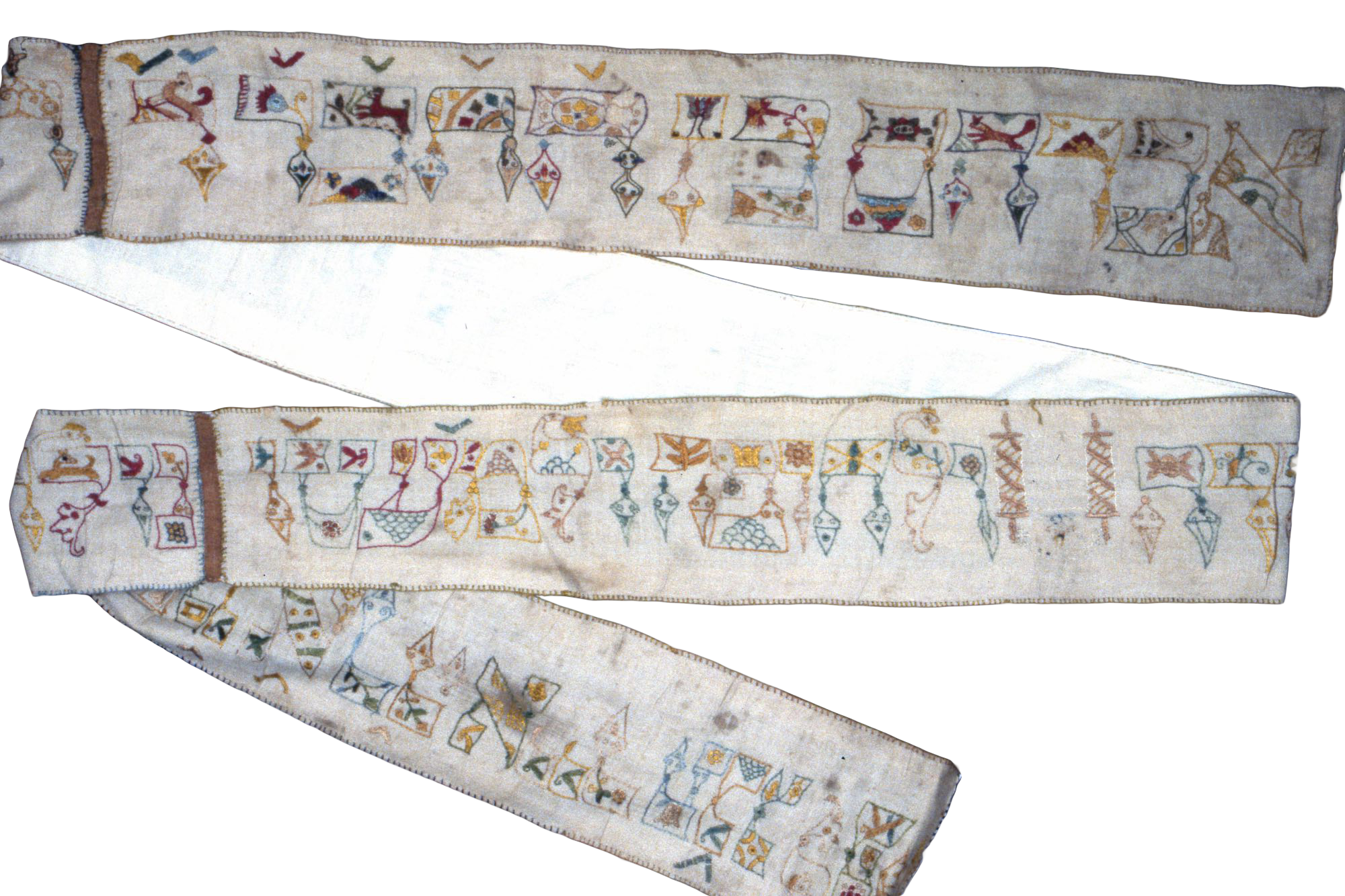
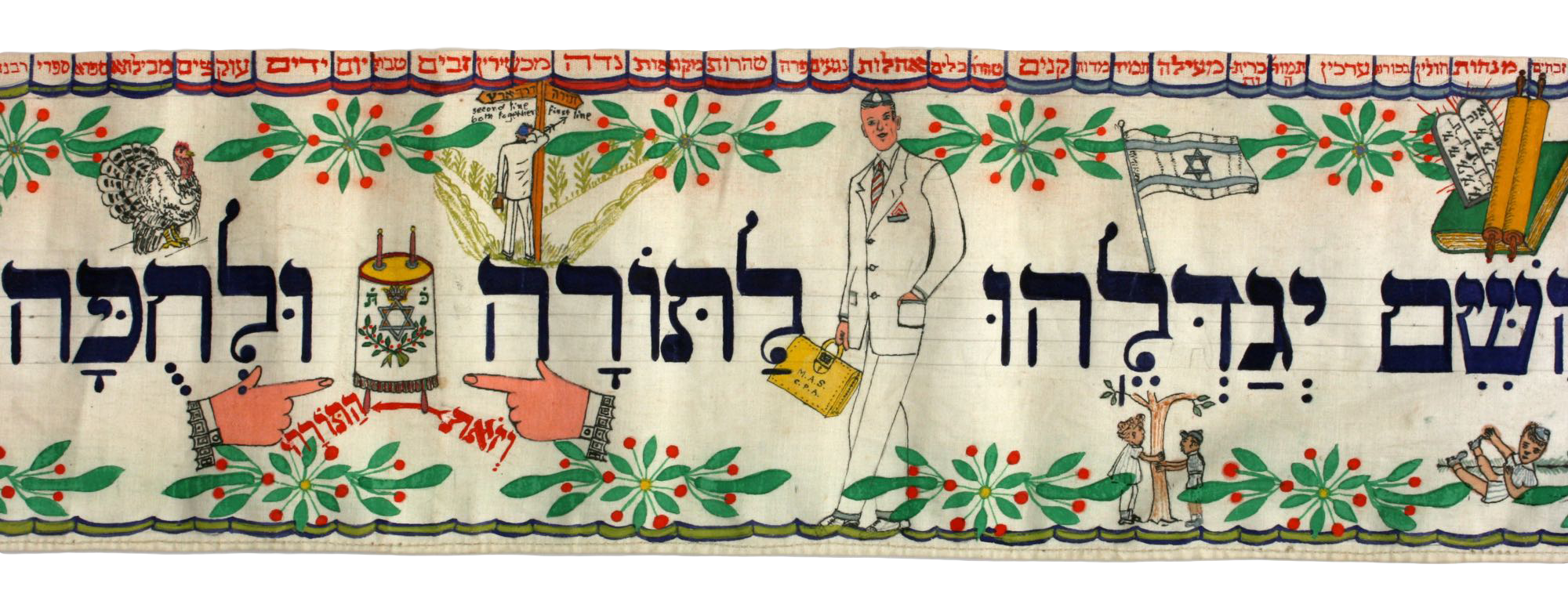
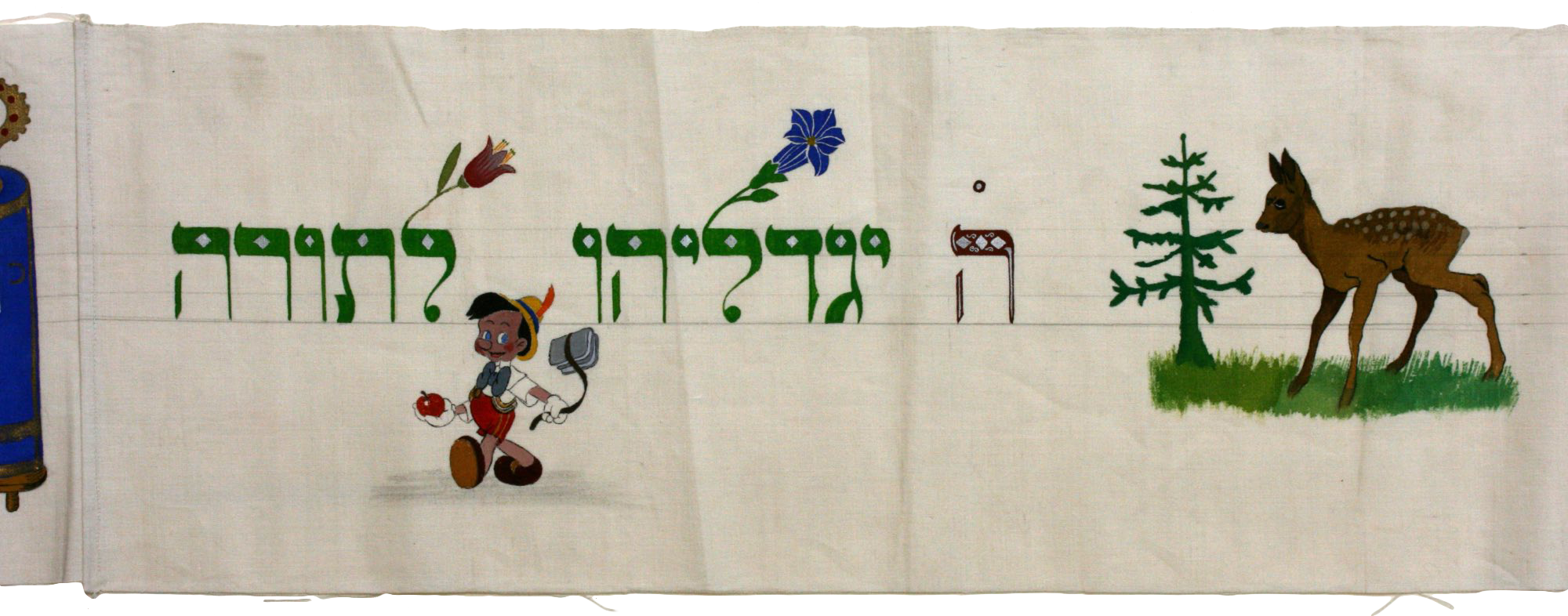
The Torah binder differs according to local tradition. In Rhineland communities (Germany, Alsace, and Switzerland) it can be called a wimple (Wimpel), and it is made from the cloth used to swaddle a baby boy at his circumcision. It is made of other fabric in other communities and is called mappah, avnet, or fascia.
In some communities, such as the Sephardic and Romaniote communities, ceremonial textiles for the Torah were often known by the general term “mappah,” which makes it sometimes difficult to know which item is being alluded to, the wrapper, the binder or the mantle.
“Birth Certificates in Cloth: Ritual Textiles for the Jewish Life Cycle”, by the Magnes Collection of Jewish Art and Life.
Doleželová, Jana. “Torah Binders from Four Centuries at the State Jewish Museum in Prague.” Judaica Bohemiae, vol. IX, no. 2, 1973, pp. 55-71.
Doleželová, Jana. “Binders and Festive Covers from the Collections of the State Jewish Museum in Prague: New Knowledge and their Wider Significance.” Judaica Bohemiae, vol. X, no. 2, 1974, pp. 91-104.
Eis, Ruth. Torah Binders of the Judah Magnes Museum. Berkeley: Judah L. Magnes Museum, 1979.
Feuchtwanger, Naomi. “The Danish Torah Binders.” Jewish Art in Denmark: Jews in Danish Art, edited by Mirjam Gelfer Jørgensen, Copenhagen: Rhodos, 1999, pp. 362-411.
Hamburger, Binyomin Shlomo. Shorashei Minhag Ashkenaz [Minhag Ashkenaz: Sources and Roots]. B’nai Brak: Machon Moreshes Ashkenaz, the Institute for German-Jewish Heritage, 2000), pp. 322- 604.
Kirshenblatt-Gimblett, Barbara. “The Cut That Binds: The Western Ashkenazic Torah Binder as Nexus between Circumcision and Torah.” Celebration: Studies in Festivity and Ritual, edited by Victor W. Turner, Washington, D.C.: Smithsonian Institution Press, 1982, pp. 136-46.
Pierret, Philippe. “Les Mappoth de la Communauté juive d’Arlon: Un Patrimoine Textile Méconnu.” Les Cahiers de la Mémoire Contemporaine. Bijdragen tot de Eigentijdse Herinnering, vol. 5, 2004, pp. 133-50.
Veselská, Dana, editor. May God Let Him Grow. A Child’s Birth in the Culture and Customs of Bohemian and Moravian Jews. Prague: Jewish Museum in Prague, 2009.
Weber, Annette, et al., editors. Mappot … blessed be who comes: The Band of Jewish Tradition. Mappot … Gesegnet, der da kommt: Das Band Jüdischer Tradition. Munich: Prähistorische Staatssammlung München, 1997.
Weyl, Robert, and Freddy Raphaël, “Les Mappot d’Alsace.” Ethnologie française, vol. 11, no. 3, July-September 1981, pp. 233-238.
Yaniv, Bracha. “The Torah Wrapper and the Torah Binder.” Ceremonial Synagogue Textiles: From Ashkenazi, Sephardi, and Italian Communities, Liverpool: Liverpool University Press, 2019, pp. 85-126.
Select a language